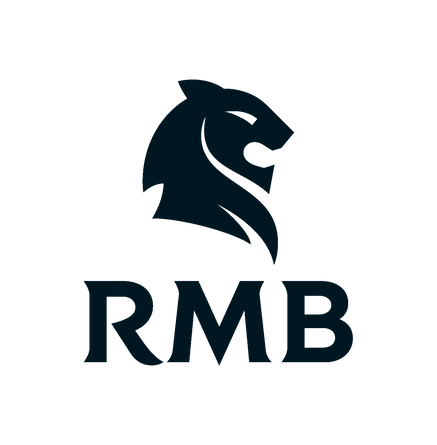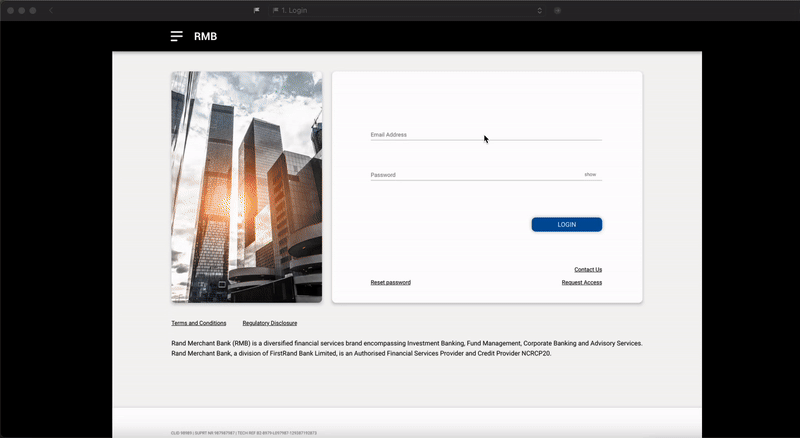Rand Merchant Bank
RMB’s letters of credit system handled exports, imports, and bank guarantees, playing a critical role for businesses in the export and import sector by facilitating regular transactions.
However, the older system was outdated and difficult to use. Only a few people truly understood its complexity and how it operated.
Role
Senior product designer
Year
2020 - 2021
Team

Developers
Product managers
Achievements
Reduced application time by 66%
Our focus wasn’t just on updating the digital look, but on simplifying the complex application process and optimizing the flow. What once took users 15-20 minutes to complete was reduced to just 5 minutes.
Ran an extensive contextual study which led to improvements
We tested with their commercial user base to better understand their requirements, enabling us to define the scope more clearly and prioritize key issues.
Successfully used sprints to accelerate onboarding and contextualisation
Onboarding a project typically takes 3 months to align all stakeholders on the problem. By running a 1-week sprint, we fast-tracked the process and delivered actual work much quicker.
The Challenge
RMB’s commercial clients in the export and import sector are losing valuable time due to a complicated application process. While the treasurer department’s decision-makers may not directly use the tool, its inefficiencies still impact the bottom line.
I believe the complexity of bank guarantees, letters of credit, and trade imports is a wicked problem that can only be managed, not entirely solved. While we've significantly simplified the process, there are still factors beyond our control. What’s exciting, however, is how we’ve been able to navigate this complexity within those constraints and still achieve our milestones.
In summary:
-
System inefficiencies are affecting profitability.
-
Dependence on the system to purchase stock.
-
An inflexible and difficult-to-use system that creates reliance on a single person, making it a perceived risk for the business.
Kicking off with Sprints
During the early days of COVID, I conducted a virtual 5-day sprint to kick off the project. With everything shifting online, I had to quickly adapt to using virtual tools and keeping the team engaged.
The goal of the sprint was to align and onboard all stakeholders as quickly as possible. Typically, onboarding with a bank takes 3 months or more, but we completed the process in just 1 month.
I wouldn't recommend using this approach for all new joiners, as it’s quite intensive and requires pulling key decision-makers away from their day-to-day tasks. However, it worked well in our case, as many projects were being launched simultaneously for the first time.



Design research and testing
My contextual studies served as the foundation for understanding the product's north star and identifying the key milestones our stakeholders aimed to achieve. I conducted interviews with several executive team members and product managers to gain both a high-level and on-the-ground perspective.
I also spoke with the company’s most frequent clients to gain insight into customer experiences. Through these interviews, several recurring themes emerged that aligned with stakeholder goals, while others highlighted a gap in thinking.
This research uncovered an underserved opportunity in the market—one that had not been thoroughly explored before. It challenged some existing assumptions and defined a clear scope for improvement. Additionally, it identified future opportunities for growth and enhancement.
Stakeholder contextual studies



User contextual studies



Old vs the new
The older system was quite clunky, so from a visual standpoint, improving it was relatively straightforward and didn’t require much effort. The real challenge lay in simplifying the complex jargon into clear, accessible language, especially since we didn’t have copywriters on the project.
Another major challenge was breaking the journey into shorter, more manageable sprints. We needed to ensure these steps were easy for the customer to complete without making the experience feel disjointed or fragmented.
Older designs


Prototype walkthrough (Demo)
Below is a quick demo of the refined journey with attached screenshots.



After thoughts
When I first entered the world of commercial banking, I was unfamiliar with products of this level of complexity. However, I had confidence in my process and leaned on design thinking to help navigate and uncover the customer journey. By the end of the project, a year later, I had truly become an expert in letters of credit and bank guarantees.
What made this project particularly unique was the use of sprint workshops to quickly onboard and align multiple high-level stakeholders, even amid the challenges of COVID. This experience really pushed me to hone my facilitation skills and lead engaging activities in a virtual environment.
While I took on much of the work independently, I couldn’t have succeeded without the support of Webtonic and my colleagues. We truly had each other’s backs throughout the pandemic, adapting quickly to continue delivering value.











